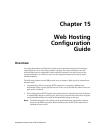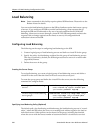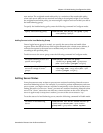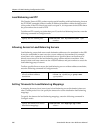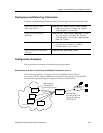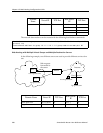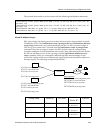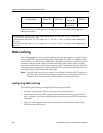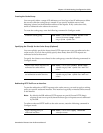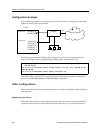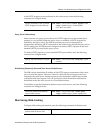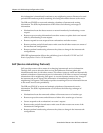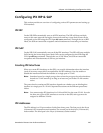
Chapter 15: Web Hosting Configuration Guide
240 SmartSwitch Router User Reference Manual
The network shown in the previous example can be created with the following load-
balance commands:
Web Caching
Web caching provides a way to store frequently accessed Web objects on a cache of local
servers. Each HTTP request is transparently redirected by the SSR to a configured cache
server. When a user first accesses a Web object, that object is stored on a cache server. Each
subsequent request for the object uses this cached object. Web caching allows multiple
users to access Web objects stored on local servers with a much faster response time than
accessing the same objects over a WAN connection. This can also result in substantial cost
savings by reducing the WAN bandwidth usage.
Note:
The SSR itself does not act as cache for web objects. It redirects HTTP requests to
local servers on which the web objects are cached. One or more local servers are
needed to work as cache servers with the SSR’s web caching function.
Configuring Web Caching
The following are the steps in configuring Web caching on the SSR:
1. Create the cache group (a list of cache servers) to cache Web objects.
2. Specify the hosts whose HTTP requests will be redirected to the cache servers. This
step is optional; if you do not explicitly define these hosts, then all HTTP requests are
redirected.
3. Apply the caching policy to an outbound interface to redirect HTTP traffic on that
interface to the cache servers.
www.toys.com 207.135.89.50 80 S1: 10.1.1.50
S2: 10.1.2.50
80
Group Name Virtual IP TCP Port
Destination
Server IP
TCP Port
load-balance create vip-range-name mywwwrange 207.135.89.16-207.135.89.50
virtual-port 80 protocol tcp
load-balance add host-to-vip-range 10.1.1.16-10.1.1.50 vip-range-name mywwwrange
port 80
load-balance add host-to-vip-range 10.1.2.16-10.1.2.50 vip-range-name mywwwrange
port 80




